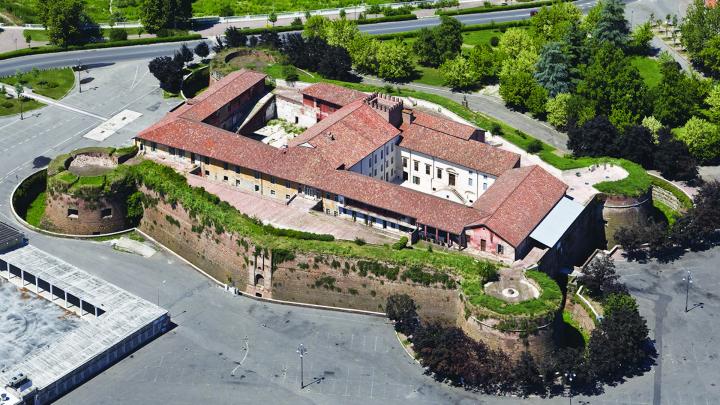Situated on the urbanised outskirts of Casale, the castle was commissioned by the Marquis of Monferrato Giovanni II Paleologo in 1351. Work on the castle was completed by 1357, with the construction of a quadrilateral complex corresponding to the space now occupied by the first courtyard. Transformed between 1464 and 1465, we owe the definitive choice of Casale as the permanent seat of the marquises to the beginning of the rule of Guglielmo VIII. Its layout was altered to comply with the new residential and bureaucratic requirements: in the 1470s, the courtyard of the 14th century complex was surrounded by loggias destined for use as administrative offices and a second courtyard was added to the west side and was overlooked by the private apartments of the princes. The whole was completed by a faussebraye with round corner towers around the whole building, adapting it to the extensive use of artillery. The end of the Palaeologa dynasty in 1533 and the assignment of Monferrato to the Gonzaga family from Mantua gave the castle a military destiny. While Francesco Orologi's drawing (ca. 1555) shows that ravelins had already been added to protect the curtain walls, it was at the end of the 1550s that the need for more organic defensive strengthening began to be considered. In 1568-1572, with the probable collaboration of Vespasiano Gonzaga, Giorgio Paleari Fratino created four large triangular ravelins that integrated better with the round towers, which were strengthened in 1559 to a design by Bartolino Baronino. The commencement of work on the citadel in 1590 deprived the complex of part of its function. In the years that followed, most of the work carried out consisted in repairs to the structures damaged during the numerous sieges to which the city was subjected. After passing into the hands of the Savoy family, together with the entire Monferrato district, with the Treaty of Utrecht (1713), the castle lost all remaining utility: after being stripped of its furnishings, it was transformed into a barracks and, between 1856 and 1904, deprived of the ravelins to recover public spaces for use by the city.

